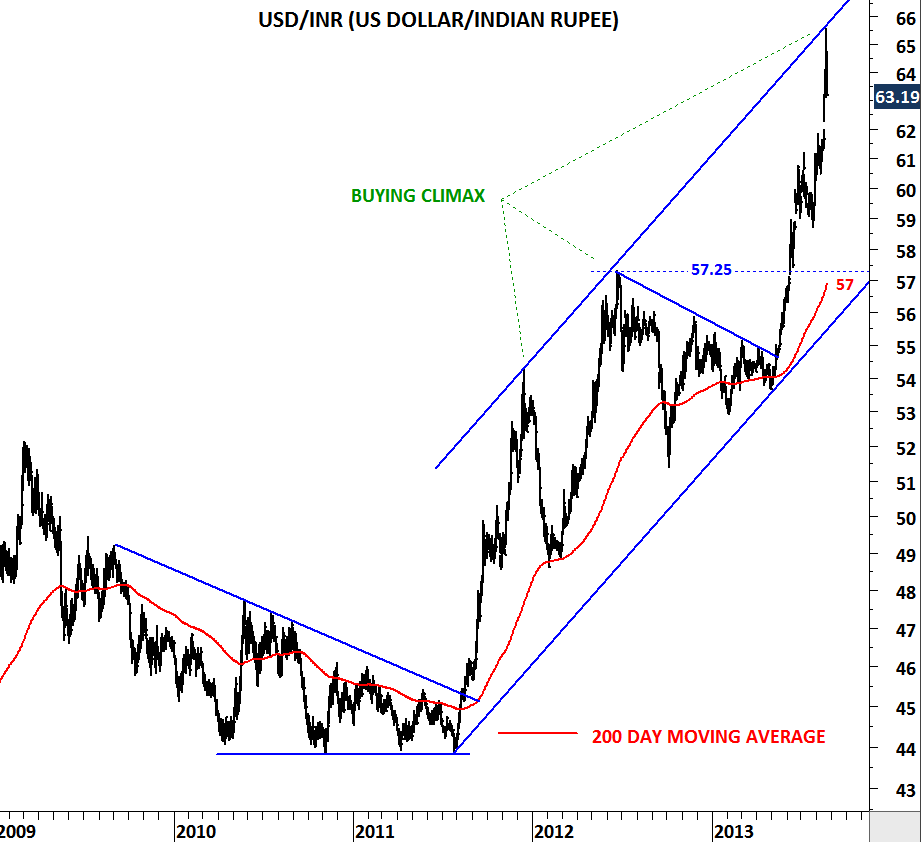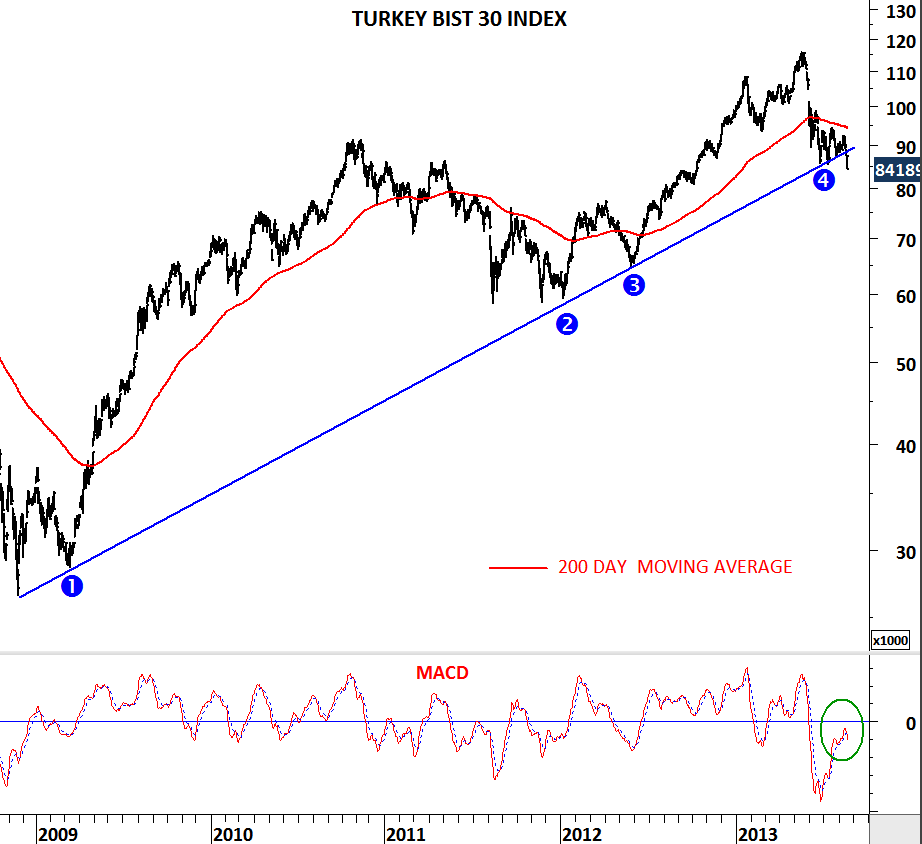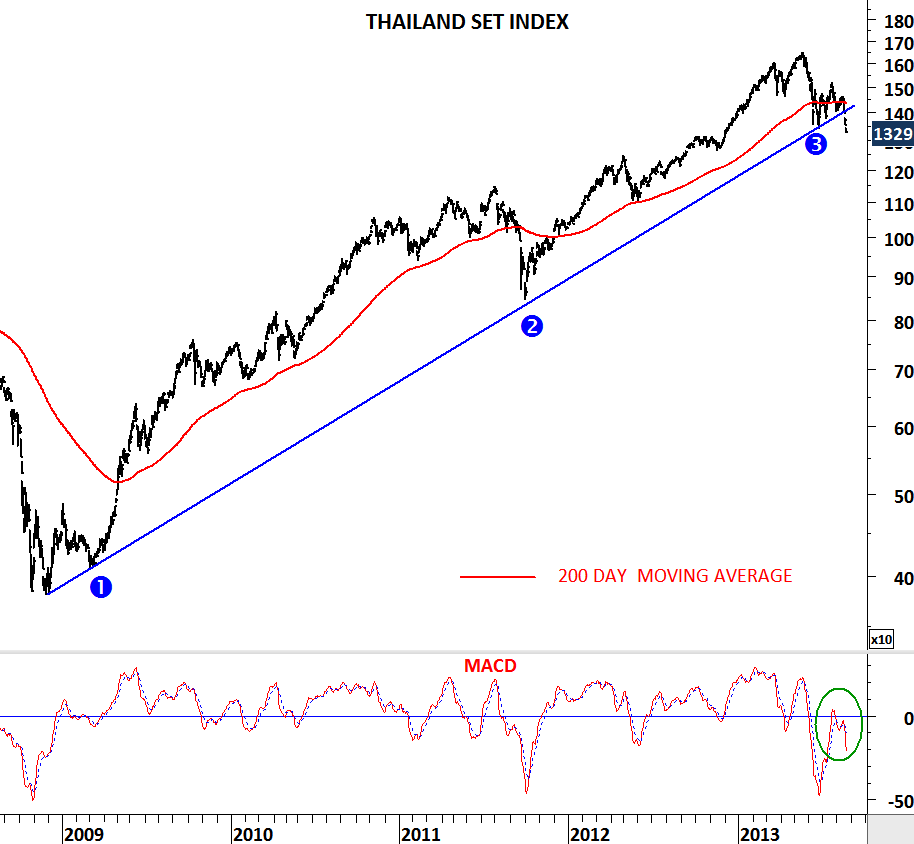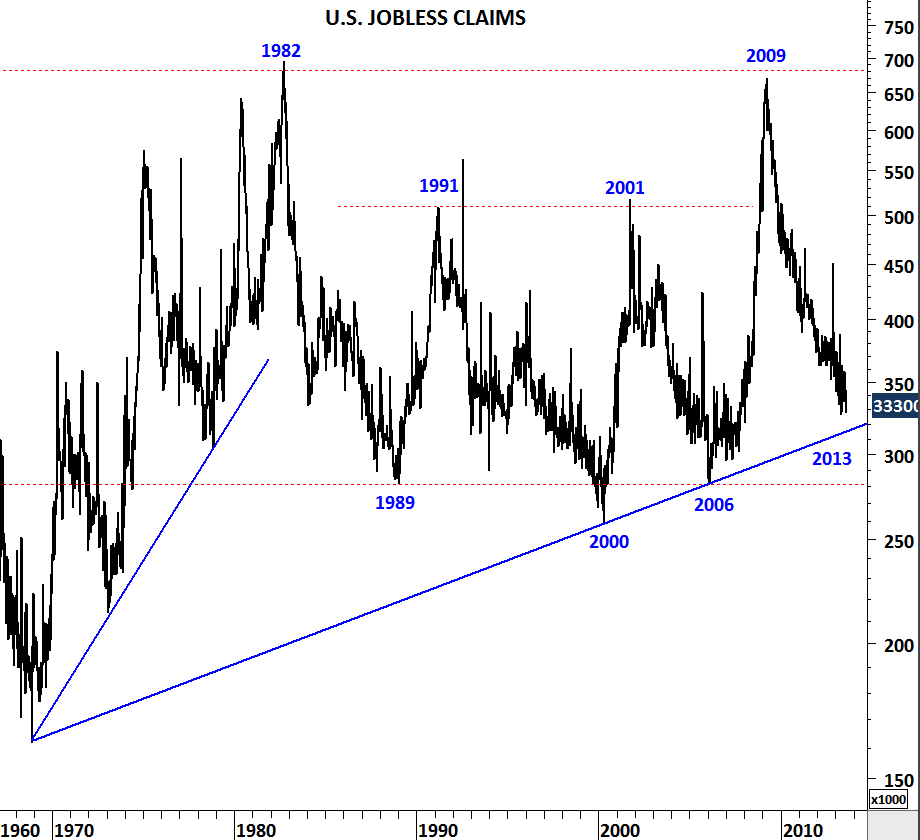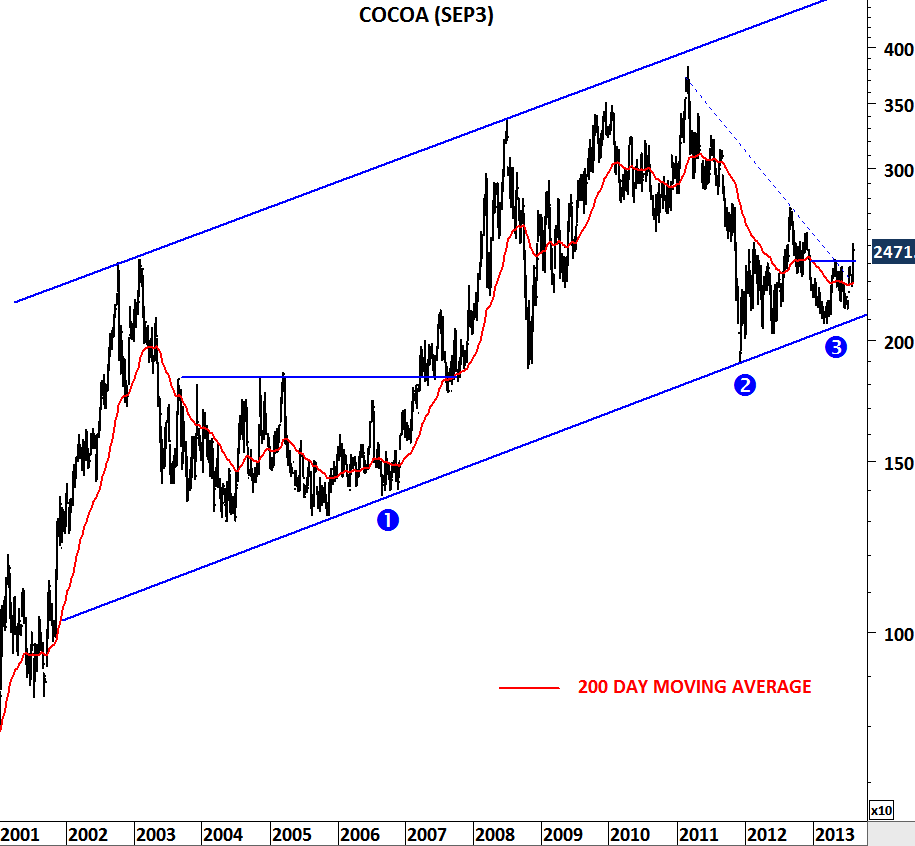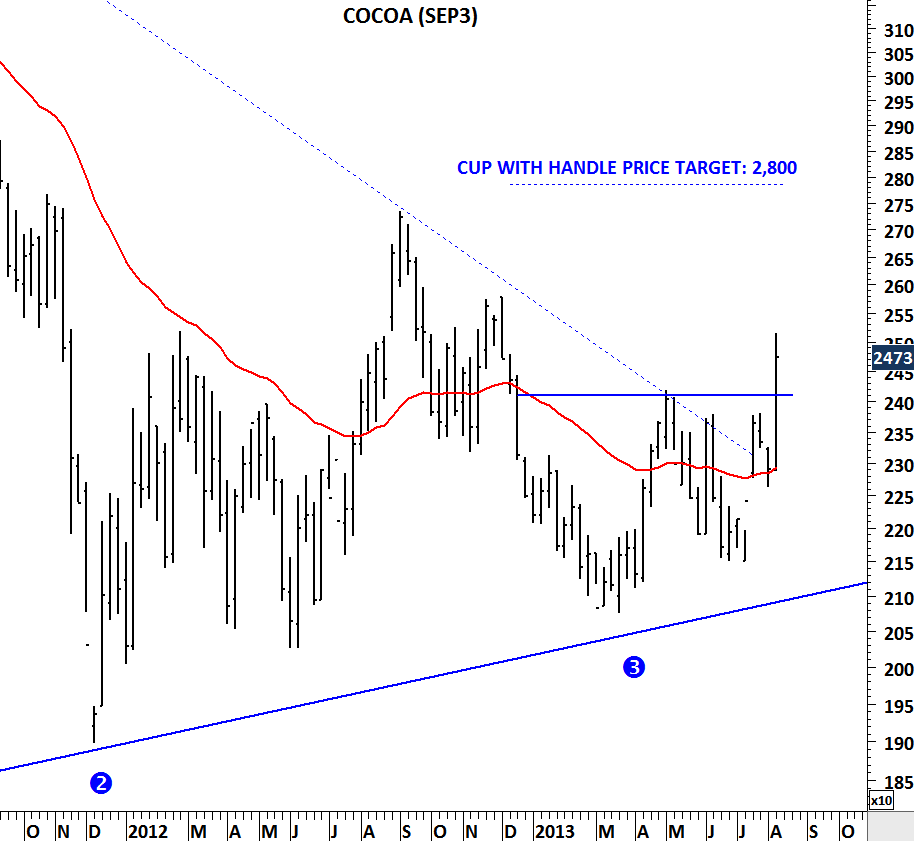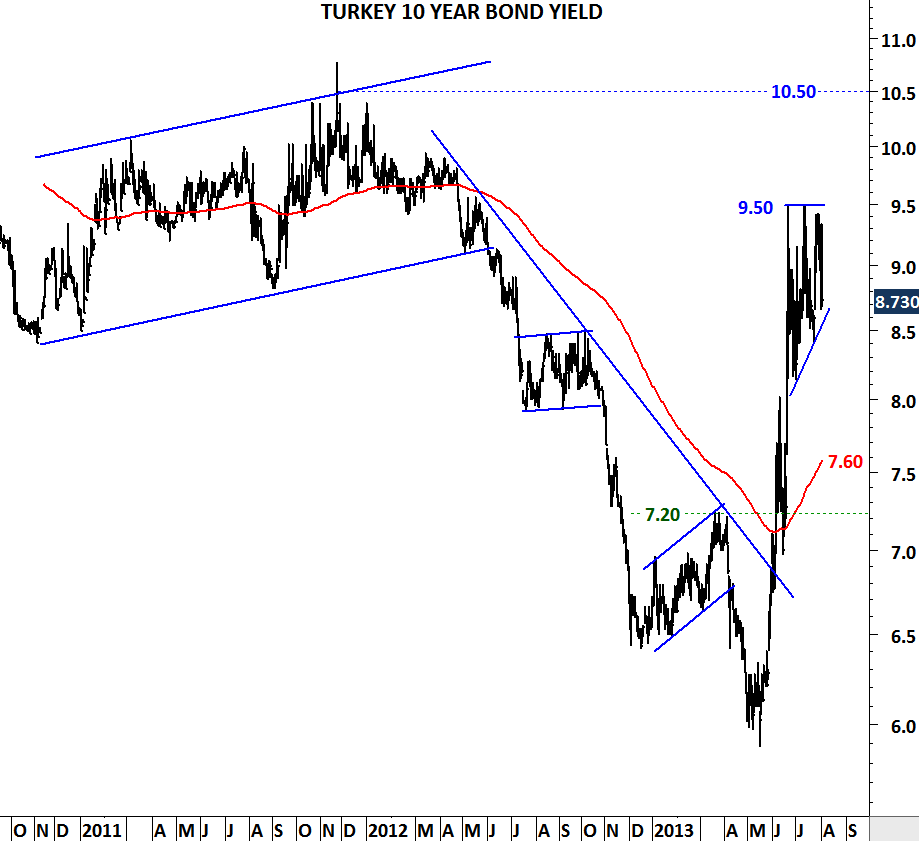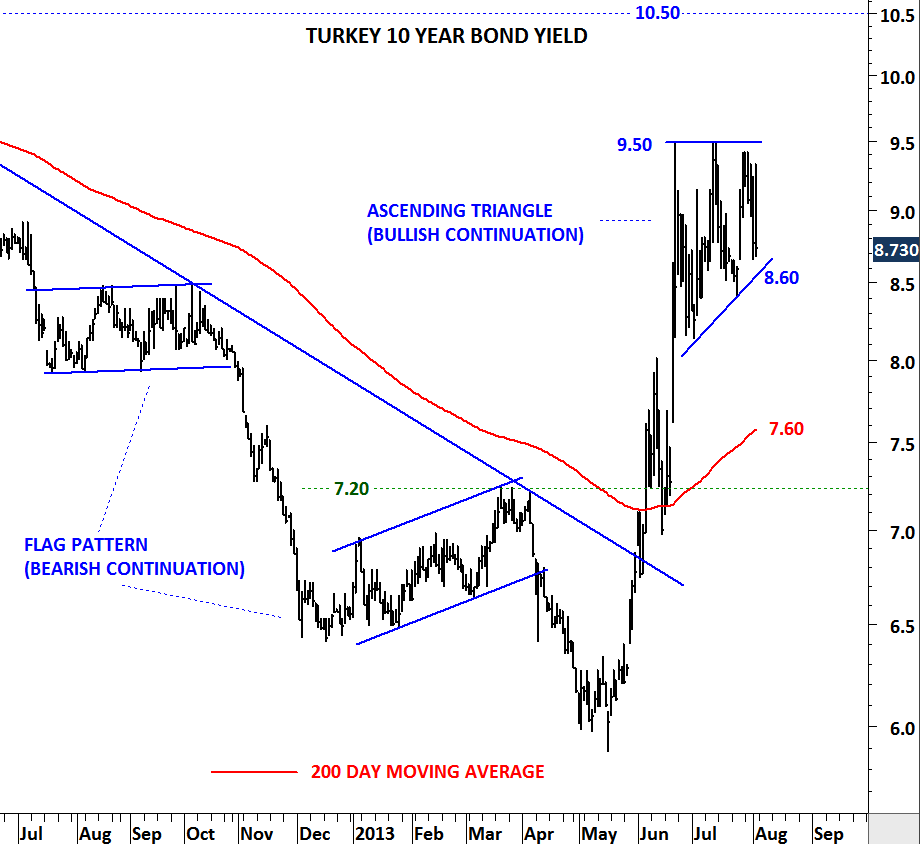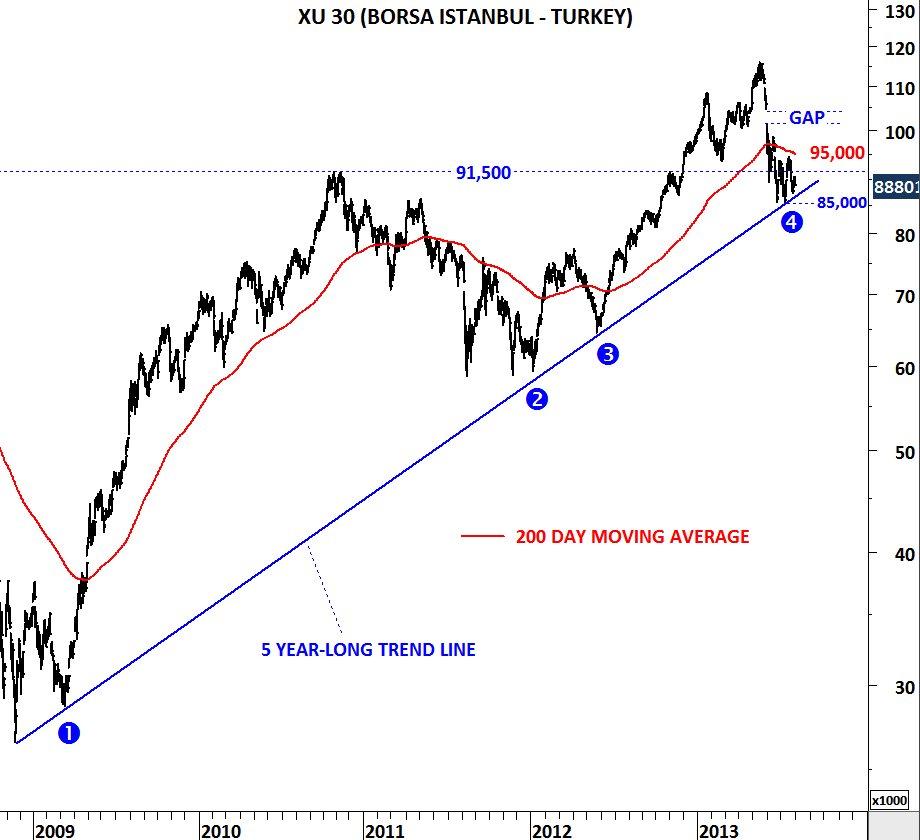USD/INR (U.S. DOLLAR/INDIAN RUPEE)
Earlier in May, Tech Charts blog followers read three different updates on the USD/INR suggesting strong U.S. dollar versus the Rupee (May 7, May 13, May 28). Since then the cross rate had a strong breakout and entered into a parabolic upward move. Over the past month price reached a strong trend channel resistance between 65 and 66 levels. Parabolic moves are usually followed by sharp setbacks. The latest rally may near completion with a buying climax similar to previous sharp rises in 2011 and 2012. Uptrend is over extended and we can see stabilization and consolidation between 60 and 66 levels.

